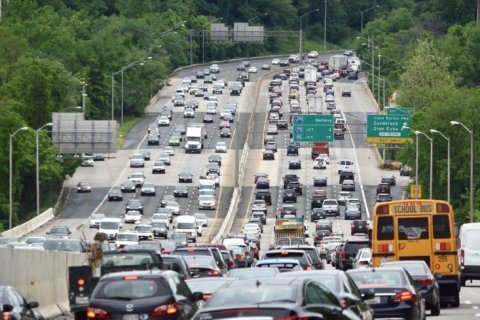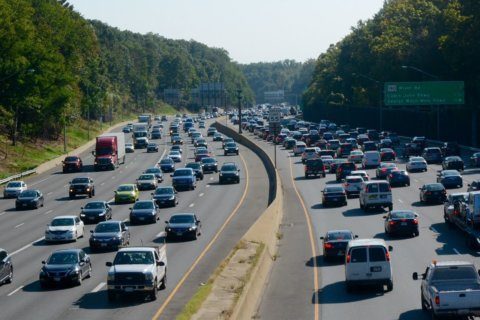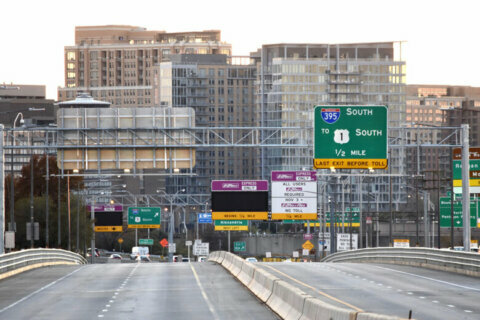Major changes to extend toll lanes on the Capital Beltway would involve taking slivers of 89 properties but could provide some improvements to traffic flow, a Virginia Department of Transportation review found.
A public meeting was originally scheduled Thursday night for residents and drivers to provide feedback on the plans to significantly widen the Beltway through McLean in the area between the Dulles Toll Road and the George Washington Parkway, but that was postponed until April. VDOT said that formal comments and input can be submitted online to be included in public record.
The VDOT review concludes that all of the merges and lane changes and the sheer number of cars trying to squeeze over the Potomac River all play a role in making driving on the Beltway difficult at times.
Under construction plans for the 495 Express Lanes Extension that could be open by 2024, VDOT and lane operator Transurban would bring the lanes up to the G.W. Parkway and add new Express Lanes access points in one direction or the other at the Dulles Toll Road/Access Road/Connector Road/Route 267, at the G.W. Parkway, and for southbound toll lane traffic to reach Route 123.
The work will eliminate the “Red X” merge lane for Express Lane traffic on the Inner Loop.
There would also be numerous ramp changes at both Route 267 and the G.W. Parkway, with even more construction planned in future years as part of Dulles Toll Road changes and as part of Maryland’s plans to extend the Express Lanes over a newly widened American Legion Bridge.
Virginia’s study assumes Maryland’s project moves forward, even if the gap between implementing the two programs would make traffic worse for a while.
Right now, VDOT’s data show traffic is significantly jammed for about 10 hours a day on the Virginia side of the Legion Bridge, a problem only expected to get worse as more people are forced to move farther out to find affordable housing.
The goal is to get more cars through the corridor more quickly.
The project also includes about 3 miles of a 10-foot-wide path for walking or biking and a future connection to a sidewalk or bike and pedestrian bridge over the Potomac River.
Property impacts
VDOT notified 89 property owners last month, including 28 residential properties, that some sliver or more of their land might be taken for the big Beltway widening project.
None of those people, businesses or institutions like churches would be forced to relocate.
In all, the project would convert about 29 acres across 50 properties into roadway or other public rights of way. The work could also impact about 3 acres of Scott’s Run Nature Preserve, and a yet-to-be-finalized part of the parkland along the G.W. Parkway.
Some trails along the corridor could also be closed during construction.
Noise walls
The latest plans call for the replacement of nine of 13 existing noise barriers, three of which will be lengthened a bit, and one new noise barrier on the northeast quadrant of the G.W. Parkway-Beltway interchange.
One other noise wall would have likely been helpful from a noise perspective but has been written off due to engineering concerns.







